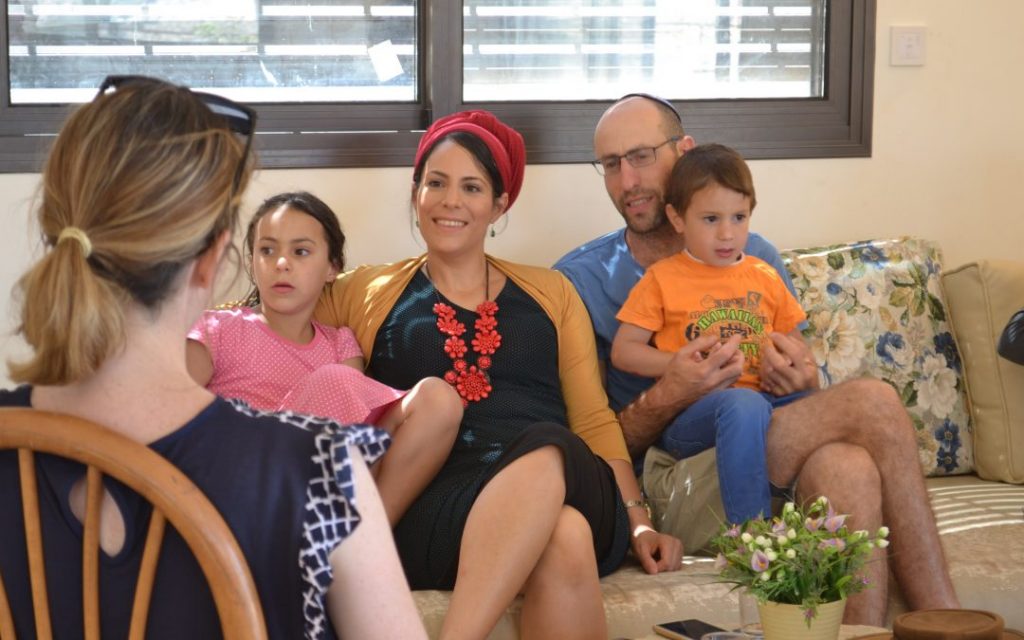Negohot Honey and A Sweet New Year From Lev Haolam
by Aryeh Tavor | Sep 18, 2017 | blog, Israel, Judea and Samaria, Producers

Recently, we had the privilege of meeting a wonderful family living in the small community of Negohot (Judea). Negohot is just a few kilometers from the holy city of Hebron and is located on a remote hilltop in the Judean mountains. My collegues at Lev Haolam and I went to Negohot to meet Shimrit and Baruch Foychtvanger, the founders of Negohot honey. We got to hear the story of how the Foychtvanger’s made it to the community of Negohot and about how Negohot Honey was started. Negohot Honey was one of the products in the September package from Lev Haolam.
When we sat down with Shimrit and Baruch to hear about their story, we began by hearing about the process of making honey and then about what makes the Negohot honey process so special and unique. Shimrit explained that when bees gather pollen to eat, they end up carrying pollen from one plant (the male species) to another (the female species), thereby giving the second plant the means to grow. “Plants can [also] be pollinated naturally by the wind” adds, Baruch.
Baruch continued to explain, “the main part of the what a bee eats are the nectar and the pollen. The nectar serves as the carbohydrates for the bee. And the pollen is the protein for them. And these are the 2 primary food groups for bees. Bees are animals that have not changed their behavior for thousands of years. They get up in the morning and to look for the pollen and nectar which is found in nearby plants.” Baruch uses the technique of cross pollination to help farmers grow their plants. He explains that he “takes the bee hives at the end of the winter, around February time, and moves them to sit near almond plants, and then to cherry plants, then to avocadoes… and from plant to plant to pollinate them.” The bi-products of the nectar and pollen which are eaten by the bee becomes the honey. This is how Shimrit and Baruch can produce different flavors. Each flavor is developed by harvesting the honey which is produced by pollen and nectar of specific plants.
Unlike Negohot honey, commercially sold honey usually has a small range as far as taste, Baruch explained. This is because, commercial manufacturers often create honey by feeding bees a sugar-water solution
which is used to produce a cheap and consistent honey. This honey generally is more sugary, less healthy and of course has less of a range of taste with which to appreciate honey. Neghohot honey is unique in that the honey comes from bees that have been fed carefully selected nectar and pollen. This selection and feeding process produces a variety of distinct honey flavors. (Some of the other flavors include Avocado flower, etc…) Another unique characteristic of Negohot honey is that the honey is not heated before packaging. Baruch explained to us that heating the honey dulls its flavor and can minimize the nutritional benefits of the honey and therefore Negohot honey is not heated.
When we asked about the history of Negohot honey, Baruch explained to us that his father was a bee farmer and had taught him the art of honey making at a young age. “My father has been a bee breeder for over 50 years and I too wanted to be a bee breeder” Baruch said. “When I was growing up, during my vacations (from school), I would try and help out [my father] in raising the bees.” Slowly but surely, Baruch continued to study farming, further enhancing both his farming and honey making skills. Today, Baruch and Shimrit bring their children into the honey trade and Baruch is proud to pass on the tradition of farming and honey production to their children. In addition to the honey produced at Negohot, the Foychtvangers are also looking forward to harvesting their first grapes, from their vineyard which rests on a patch of land about 100 meters down the hill from their house.

Hearing Baruch explain the choice for the name Negohot (established in 2006), we felt inspired and proud to be a part of what Negohot represented. The name Negohot comes from the Hebrew word Nogah, or “ray of light”. Negohot means “many rays of light” or as Baruch explained, Negohot are rays of light that have been filtered.
Baruch explained that when choosing the name for the honey company, he wanted the world to be exposed to the community of Negohot and that he wanted his work to resemble a shining light to others; a light with which to showcase the beauty of the Israel’s heartland, Judea and Samaria. He wanted to inspire others with his life’s work, which is intrinsically attached to Israel’s heartland. Shimrit’s message to Lev Haolam’s partners was equally inspiring and timeless in its nature. “I know that this [transaction] is not just a sale. I feel a special happiness since there is a connection that is created between Lev Haolam partners and us. I feel that there is an appreciation and a backing; that there are people that appreciate what we are doing.”
From the Lev Haolam family to you and yours, we wish you a happy and sweet new year!
